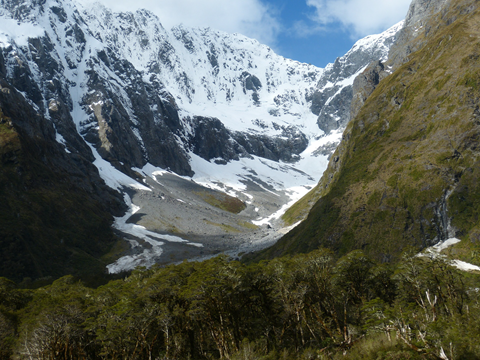Finding lost persons in the wilderness is, unfortunately, increasingly necessary as greater numbers of persons explore in the outdoors. Beyond the need to find explorers in remote environments, there is the common situation of a young child wandering off into the woods, or an elder with dementia becoming disoriented from failing to remember their path. Persons who perform search and rescue (“SAR”) are commonly volunteers with superb orienteering skills and admirable dedication to helping out at a moment’s notice in difficult situations. Dr. Aaron Billin gave a wonderful lecture entitled “Search and Rescue Theory” at the 2010 Wilderness Medical Society annual meeting. Here is just a very small amount of what we learned.
SAR Techniques
There are many definitions of SAR, generally revolving around assisting and retrieving persons in distress, providing for their initial medical and other needs, and delivering them to a place of safety. Depending on the terrain, weather, time of day, and so forth, this can be a very daunting task that requires numerous individuals, teamwork and expensive resources.
SAR types include mountain rescue, combat rescue, air-sea rescue, ground rescue, and urban rescue. Essential SAR skills include wilderness survival and improvisation, wilderness first aid, high angle rescue, low angle rescue, ice rescue, mountaineering rescue, swift water rescue, cave rescue, use of search dogs, horse-mounted rescue, dive rescue, and person tracking. Contemporary SAR participants sometimes use modern technologies, including global positioning systems (GPS), emergency locating beacons (including aircraft emergency locator transmitters [ELT], watercraft emergency position indicating beacons [EPIRB] and handheld personal locator beacons [PLB]), satellite-based locating and positioning systems, sonar, thermal imaging, and night vision apparatus. The techniques employed to find lost persons include profiling and behavior, evidence handling, “hasty teams,” grid searches, and lost person containment.
In SAR, one common technique is to attempt to construct a profile of the lost person to use to predict his or her behavior. It is even possible to use mathematical models to determine how best to go about searches for these persons.
When a person is lost, the lost person questionnaire attempts to record the source of information, name and address of the lost person, physical description, trip plans, clothing type, point last seen, outdoor experience, habits and personality, health and general condition, equipment carried, contacts that the lost person would make if possible, what actions have been taken, and family concerns. All of these are potentially useful to help locate and care for the lost person.
Search Urgency
Search urgency is determined by a number of factors, including age, medical condition, number of lost persons, experience, weather, equipment, terrain and hazards, and so forth. Each of these offers information, both for an individual’s situation, and to predict the likelihood of a difficult situation and the possibility of a successful outcome. For instance, it is known that children ages one to three years may have no concept of being lost, have no navigational skills or sense of direction, will tend to wander aimlessly, and may lie down and go to sleep. Children ages three to six years are more mobile, have a concept of being lost and try to return to a familiar place, may become lost by pursuing interests or attractions, look for a place to sleep when tired, and may have been instructed to avoid strangers. Children ages six to 12 years may become confused in a strange environment, may intentionally run away for personal reasons, may not answer when called, and are provoked by darkness to accept help. Elders may suffer from dementia or senility, be hard of hearing, are often easily distracted, are oriented to past environments rather than the present, and might overextend themselves. Mentally challenged individuals of all ages behave much like children ages six to 12 years, often do not respond to their name, may hide because they are frightened or seeking shelter, may remain or hide for days in the same location, and often do not make an effort to help themselves. Despondent persons usually seek solitude, generally will not respond to searchers, are usually within sight and sound of civilization, and tend to be found near prominent locations (e.g., lake, hill, scenic vista).
Why SAR Is Needed
When hikers become lost or overdue on their return, it is often because they have lost the trail, fallen behind and become disoriented, or become ill or injured. Hunters may become lost because in pursuit of game, they have dropped their attention on navigation, overextended themselves in terms of terrain and darkness, or are unprepared for inclement weather. Fishermen get into trouble by having accidents, including those related to boating. Climbers run afoul of weather, falling debris, and avalanches. Skiers go out of bounds, suffer accidents, or stay out late as the day descends into disorienting darkness.
Organizations with information and training on SAR include the National Search and Rescue School, National Association for Search and Rescue, Mountain Rescue Association.


